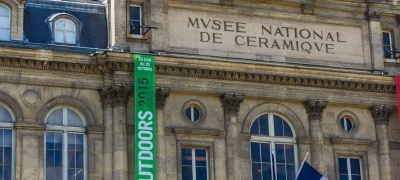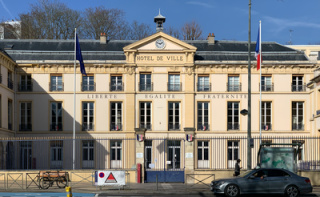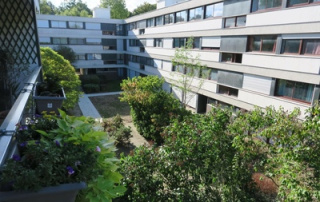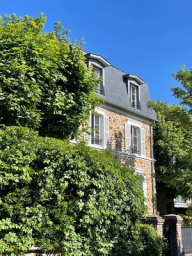Sotheby's International Realty
- 138 Avenue Victor Hugo
- 75116 PARIS, France
- +33 1 40 60 50 00
Sotheby's International Realty
- 50 rue d'Auteuil
- 75016 PARIS, France
- +33 1 56 26 56 55
Sotheby's International Realty
- 82 Avenue de Wagram
- 75017 PARIS, France
- +33 1 46 22 27 27
Sotheby's International Realty
- Place Sainte Foy - 2 Rue de Chézy
- 92200 NEUILLY, France
- +33 1 41 43 06 46
Sotheby's International Realty
- Place Sainte Foy - 2 rue de Chézy
- 92200 NEUILLY, France
- +33 1 41 25 00 00
Sotheby's International Realty
- 37-39 rue de Turenne
- 75003 PARIS, France
- +33 1 48 87 14 41

Sèvres

Sèvres - A Haven of Tranquility and Elegance
Located in the Hauts-de-Seine department, near Paris, the commune of Sèvres is a true haven of tranquility and elegance. Bordering the Seine and nestled between lush green hills, Sèvres combines the charm of an exceptional natural setting with a distinctly refined atmosphere. This prestigious neighborhood is particularly sought after for its luxury real estate, offering an unparalleled quality of life to its residents.
An Ideal Natural Setting
Sèvres stands out for its exceptional environment, with lush parks, landscaped gardens, and riverside promenades. The nearby Parc de Saint Cloud provides a verdant setting perfect for strolls, outdoor activities, and family relaxation. The panoramic views of the Seine and the surrounding area make Sèvres a highly desirable place to live for those seeking a peaceful retreat while remaining close to Paris.
A Prized Residential Area
The Sèvres neighborhood is renowned for its prestigious properties that cater to the most discerning buyers. It primarily features elegant houses, villas with private gardens, and high-end apartments. These luxury residences offer spacious and bright living spaces, often enhanced by high-end amenities such as private pools, spas, and outdoor relaxation areas. Properties frequently boast breathtaking views of the Seine, the Parc de Saint Cloud, or the surrounding hills.
Activities and Leisure
Sèvres offers a wide range of activities and leisure options for its residents. Art and culture enthusiasts can explore the Musée de la Céramique de Sèvres, which showcases prestigious collections of ceramic art. The town is also known for its cultural events, such as art exhibitions and concerts, which add a vibrant touch to local life. Sports enthusiasts will enjoy numerous facilities, including tennis courts, fitness centers, and sailing clubs on the Seine.
Real Estate Prices in Sèvres
As of July 2024, the real estate market in Sèvres shows an average price of €5,880 per square meter. Prices can vary significantly depending on property characteristics, ranging from €3,925 to €10,613 per square meter. These prices reflect the high demand for luxury residences in this sought-after neighborhood.
Why Choose Sèvres?
Choosing to live in Sèvres means opting for a lifestyle that combines prestige, comfort, and tranquility. This neighborhood offers an exceptional residential environment, with luxury properties and high-quality infrastructure, while remaining close to Paris’s cultural attractions and business centers. Sèvres stands out for its calm and elegant ambiance, providing an unmatched quality of life for its residents.

Les Bruyères – A Haven of Tranquility in Sèvres
Nestled in the commune of Sèvres, the Les Bruyères neighborhood is a true haven of peace, combining natural beauty with refined residential comfort. Renowned for its charming ambiance and lush green spaces, Les Bruyères offers an idyllic living environment, away from the hustle and bustle of the city while remaining close to Paris.
A Peaceful Refuge
Les Bruyères stands out for its lush green spaces and serene environment. The neighborhood is dotted with well-maintained parks and gardens, making it an ideal retreat for nature lovers and families. Residents can enjoy relaxing walks along picturesque trails or unwind in the tranquil atmosphere of the local green spaces.
Charming Residences
The real estate in Les Bruyères consists of elegant, spacious homes, often surrounded by beautiful gardens. The neighborhood is known for its high-quality residential properties, including both modern houses and classic family homes. Many of these properties offer generous living spaces and contemporary amenities, contributing to a comfortable and luxurious lifestyle.
A Desirable Location
With its blend of natural beauty and upscale residential living, Les Bruyères is a highly sought-after neighborhood. It offers easy access to local amenities, such as shops, restaurants, and recreational facilities, while maintaining an exclusive and peaceful atmosphere. Proximity to Paris allows residents to enjoy the benefits of the capital city while savoring the tranquility of their neighborhood.

Crystalware – Manufacture
Nestled in the heart of the Sèvres neighborhood, the Cristallerie - Manufacture de Sèvres is a symbol of French craftsmanship and luxury.
This historic manufacture, renowned for its refined crystal pieces, adds a touch of prestige and elegance to the neighborhood.
Living in Sèvres not only means enjoying a high-quality residential environment but also being surrounded by the artistic and artisanal heritage of the Cristallerie. This neighborhood thus combines modern comfort with a rich history, offering residents an unparalleled living experience.

A Vibrant City Center
The center of Sèvres stands out for its lively and welcoming atmosphere. This central neighborhood combines the dynamism of a bustling urban life with the tranquility of a peaceful residential setting. With its picturesque shopping streets, elegant boutiques, and cozy cafes, the city center offers a pleasant and practical living environment while maintaining an timeless charm.
An Animated Neighborhood Life
The city center is the beating heart of Sèvres, where commercial and cultural activities are concentrated. Local markets, community events, and festivals regularly animate the streets, creating a dynamic and festive atmosphere. Residents can find a wide range of services, from fine dining restaurants to local shops, as well as cultural establishments such as art galleries and theaters.
Prestigious Real Estate in the Heart of Sèvres
In terms of real estate, the city center of Sèvres offers high-end properties, ranging from modern apartments to elegant houses. Residences in this area are often appreciated for their exceptional quality of life and proximity to all amenities. The spacious apartments offer high-end features, while family homes benefit from well-maintained outdoor spaces and private gardens.




